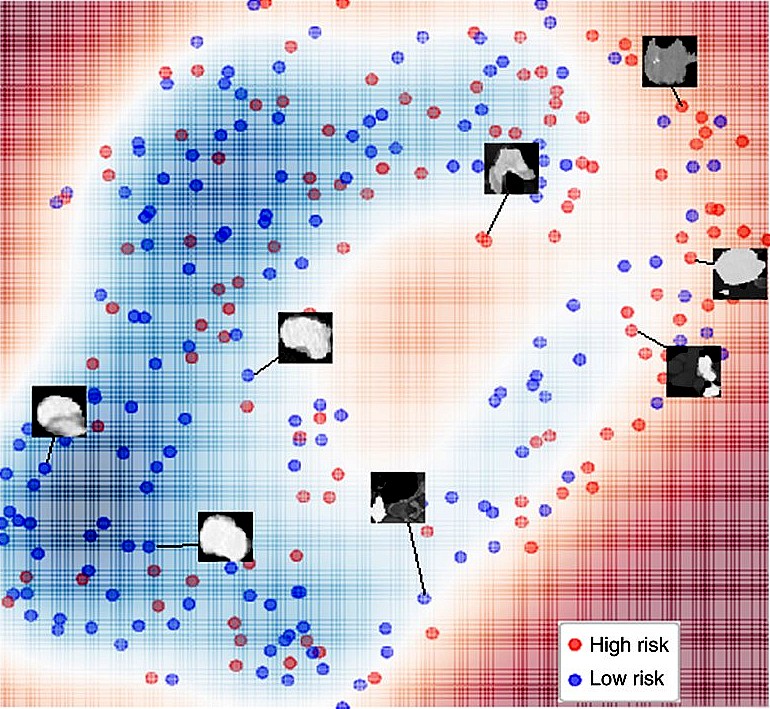Machine learning improves interpretation of CT lung cancer images, guides treatment
Computed tomography (CT) is a major diagnostic tool for assessment of lung cancer in patients. Now NIBIB-funded researchers at Stanford University have created an artificial neural network that analyzes lung CT scans to provide information about lung cancer severity that can guide treatment options.
CT imaging is an important diagnostic tool to measure the location, extent, size, and shape of lung lesions used to guide therapeutic decisions for patients with lung cancer—the most common fatal malignancy in adults worldwide. However, analysis of CT images is limited to what is visible to the human eye, and reader variability results in differences in clinical care across different oncology centers.

A multidisciplinary group of experts in biomedical informatics, radiology, data science, electrical engineering, and radiation oncology have teamed up to create a machine learning neural network called LungNet designed to obtain consistent, fast, and accurate information from lung CT scans from patients. The group worked with scans from adults with non-small cell lung cancer (NSCLC), which accounts for 85% of lung cancer diagnoses.
“LungNet demonstrates the benefits of designing and training machine learning tools directly on medical images from patients,” said Qi Duan, Ph.D., director of the NIBIB Program in Image Processing, Visual Perception and Display. “This is an outstanding example of how machine learning technology can be a cost-effective approach to advance disease detection, diagnosis, and treatment.”
The research group was led by Olivier Gevaert, Assistant Professor of Medicine in Biomedical Informatics Research, at Stanford who specializes in the development of machine learning methods for biomedical decision support using multi-scale biomedical data.
“Quantitative image analysis has demonstrated that radiological images, such as CT scans of patients with lung cancer, contain more minable information than what is observed by radiologists,” explained Gevaert. “Using CT image datasets from several different oncology clinics, we set out to determine whether our neural network could be trained to accurately and reproducibly analyze the scans and deliver consistent, useful clinical information.”
The neural network called LungNet was trained and evaluated on four independent cohorts of patients with NSCLC from four medical centers, with each center averaging several hundred patients. The LungNet analysis accurately predicted overall survival in all four patient groups. LungNet also accurately classified benign versus malignant nodules and was able to further stratify nodules regarding cancer progression.
The research team expects LungNet to be extremely valuable for not only classifying benign versus malignant tumors but also for stratifying patients into low, medium, and high risk groups. This allows for intensified treatment for patients in the high-risk group as well as reducing unnecessary treatments for patients in the low-risk group.
The results were published in the journal Nature Machine Intelligence1. The work was supported by the National Institute of Biomedical Imaging and Bioengineering (NIBIB) of the National Institutes of Health under awards R01EB020527 and R56EB020527.
